The Ultimate Guide to Finding the Right Crankshaft for Sale
Frankly speaking, the crankshaft is the unsung hero tucked away deep within your engine. It's the component that translates the linear motion of the pistons into rotational motion, ultimately powering your vehicle or machinery. Without a properly functioning crankshaft, your engine is just a collection of inert metal parts. So, when yours needs replacing, finding the right crankshaft for sale becomes a mission-critical task. It's not just about getting any crankshaft; it's about getting the *right* one, one that matches your engine's specifications and your performance needs.
In my experience, many people underestimate the complexity involved in sourcing a new or replacement crankshaft. There are countless variables to consider, from material type to balancing requirements, and the market itself can be a labyrinth of options. This comprehensive guide aims to demystify the process, helping you make an informed decision whether you're a seasoned mechanic, a DIY enthusiast, or simply someone looking to understand their engine better.
Understanding the Heart of Your Engine: What is a Crankshaft?
At its core, a crankshaft is a large, rotating shaft that, as mentioned, converts the up-and-down motion of the pistons into the circular motion needed to turn the wheels (or drive other machinery). It's a marvel of engineering, designed to withstand immense forces, high temperatures, and constant friction. Imagine the incredible stresses it endures: every combustion event, every piston stroke, every revolution puts a tremendous load on this single component.
The crankshaft features main journals that ride in the main bearings in the engine block, and rod journals to which the connecting rods (and thus the pistons) are attached. Counterweights are strategically placed to balance the rotating mass, ensuring smooth operation and reducing vibration. A damaged or worn crankshaft can lead to catastrophic engine failure, manifesting as knocking sounds, loss of power, or even a complete seize-up. When these symptoms appear, the hunt for a reliable crankshaft for sale begins in earnest.
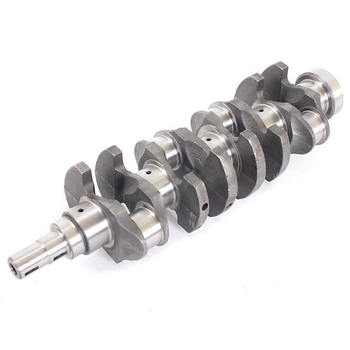
Interestingly enough, the design and material of a crankshaft vary significantly depending on the engine's intended use and performance requirements. A crankshaft for a high-performance racing engine will be vastly different from one designed for a standard passenger car or a heavy-duty industrial generator. Understanding these fundamental differences is the first step in making a smart purchase.
Navigating the Market: Types of Crankshafts Available
When you start looking for a crankshaft for sale, you'll quickly discover that the market offers a variety of options beyond just "new" or "used." Each type comes with its own set of advantages and disadvantages regarding cost, durability, and performance.
New Crankshafts: The Gold Standard
A new crankshaft is, as the name suggests, a brand-new component manufactured to original equipment specifications. These are typically the most expensive option but offer the peace of mind that comes with zero wear, full warranty coverage, and precise manufacturing tolerances. For critical applications or high-performance builds, a new crankshaft is often the preferred choice. You're getting a component that hasn't experienced any stress cycles, ensuring maximum lifespan and reliability.
Remanufactured Crankshafts: Value and Reliability
A remanufactured crankshaft has been meticulously inspected, repaired, and machined to meet or exceed original factory specifications. This process often involves grinding journals to a precise undersize, polishing, balancing, and sometimes even nitriding for increased hardness. The appeal here is significant: you get a component that performs like new but often at a fraction of the cost. When considering a crankshaft for sale, especially if budget is a concern but quality cannot be compromised, a remanufactured unit is an excellent middle-ground. Many experts agree that a properly remanufactured crankshaft can be just as reliable as a new one, if not more so, due to the rigorous inspection and re-machining processes. What's the typical remanufactured crankshaft cost compared to new? Often 30-60% less, making them very attractive.
Used Crankshafts: The Budget Option
Used crankshafts are pulled from donor engines, often from salvage yards or engines that have failed due to other issues. While they are the most budget-friendly option, they also carry the highest risk. The condition of a used crankshaft can vary wildly, from perfectly usable to severely damaged. Thorough inspection is paramount, and often, even a "good" used crankshaft will require some machining (like polishing or minor grinding) before installation. If you're searching for a used engine crankshaft, be prepared to do your homework or rely on a trusted source.
Forged vs. Cast Crankshafts: Strength and Durability
Beyond their age or refurbishment status, crankshafts are also categorized by their manufacturing method:
- Forged Crankshafts: Made by heating and shaping steel under immense pressure, forged crankshafts have a superior grain structure, making them incredibly strong and resistant to fatigue. They are typically found in high-performance engines, heavy-duty applications, and diesel engines where extreme forces are common. If you're building a performance crankshaft upgrade, a forged unit is almost always the way to go.
- Cast Crankshafts: Produced by pouring molten iron or steel into a mold, cast crankshafts are less expensive to manufacture. While perfectly adequate for most standard passenger car engines and light-duty applications, they are inherently weaker than forged crankshafts and more susceptible to cracking under extreme stress.
Knowing the difference between these types is crucial when evaluating a crankshaft for sale, as it directly impacts its suitability for your specific application and its expected lifespan.
Key Considerations When Buying a Crankshaft
Once you've decided on the general type of crankshaft you need, it's time to dive into the specifics. This is where attention to detail truly pays off. Have you ever wondered what makes one crankshaft superior to another, or why some fail prematurely? It often comes down to these critical factors:
Material and Heat Treatment
As discussed, the material (cast iron, cast steel, or forged steel) dictates the crankshaft's inherent strength. Beyond that, heat treatment processes like nitriding or induction hardening can significantly improve surface hardness and wear resistance, especially on journal surfaces. Always inquire about the material and any post-manufacturing treatments when looking at a crankshaft for sale.
Stroke and Journal Size
These are non-negotiable. The crankshaft's stroke determines the engine's displacement, and the main and rod journal diameters must precisely match your engine's bearings and connecting rods. Even a slight mismatch can lead to catastrophic failure. Always verify these specifications with your engine's service manual or a reputable engine builder.
Balance
A properly balanced crankshaft is essential for smooth engine operation, reduced vibration, and longevity of bearings. New and remanufactured crankshafts should come pre-balanced, but it's always wise to have a professional engine builder check the balance, especially if you're building a high-performance engine or using a used crankshaft. Poor balance can lead to excessive vibration, premature bearing wear, and even structural damage to the engine block over time.
Condition and Inspection (Especially for Used)
If you're considering a used crankshaft for sale, a meticulous inspection is non-negotiable. Look for:
- Cracks: Especially around the journals, fillets (where the journal meets the counterweight), and keyways. Dye penetrant testing is ideal for this.
- Scoring or Pitting: On the journal surfaces. Even minor imperfections can lead to rapid bearing wear.
- Straightness: A bent crankshaft is useless. This requires specialized equipment to check.
- Wear: Measure journal diameters with a micrometer to check for excessive wear or taper.
To be honest, unless you have the right tools and expertise, it's best to have a professional machine shop inspect any used crankshaft before purchase. This small investment can save you thousands in potential engine damage.
Compatibility
Ensure the crankshaft is compatible not just with your engine block and rods, but also with your flywheel, harmonic balancer, and any other external components that attach to it. There can be subtle differences between model years or engine variants.
Where to Find a Quality Crankshaft for Sale
The search for a crankshaft for sale can lead you down several paths, each with its own benefits and drawbacks. Knowing where to look and what to expect from each source is key.
Specialized Engine Parts Suppliers
These are often the best source for new and high-quality remanufactured crankshafts. Reputable suppliers specialize in engine components, offer warranties, and can provide expert advice. They often have a wide inventory for various makes and models, and their quality control processes are usually top-notch. Many of these suppliers operate online, making it easy to compare options.
Online Marketplaces (eBay, Amazon, Specialty Forums)
You can certainly find a crankshaft for sale on platforms like eBay or Amazon. These sites offer convenience and potentially lower prices, especially for used or aftermarket components. However, buyer beware: the quality can vary wildly, and verifying the seller's reputation and the component's condition is crucial. Always check seller ratings, read reviews, and ask for detailed photos and specifications. For a used engine crankshaft, this route requires extra caution.
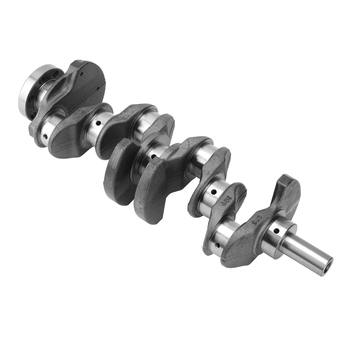
Local Salvage Yards and Junkyards
For budget-conscious builds or older, harder-to-find engines, a local salvage yard might have a crankshaft for sale. The main advantage is cost, but the downside is the unknown history and condition of the part. As mentioned, a thorough inspection by a professional is almost always necessary. You might find a diamond in the rough, but you might also find a paperweight.
Engine Builders and Performance Shops
Many professional engine builders and performance shops either stock crankshafts or have reliable sources. They can often provide a complete solution, from sourcing the right crankshaft to machining and balancing it for your specific application. While potentially more expensive than buying direct from a salvage yard, the expertise and quality assurance they provide are invaluable, especially for a performance crankshaft upgrade.
Direct from OEM Dealers
For brand-new, original equipment manufacturer (OEM) crankshafts, your local dealership is an option. This is typically the most expensive route but guarantees an exact fit and OEM quality. It's often chosen when no aftermarket or remanufactured options are available, or for restoration projects where authenticity is paramount.
The Installation Process and Post-Purchase Care
Acquiring the right crankshaft for sale is only half the battle; proper installation is equally critical. This is not a job for the faint of heart or the inexperienced.
Professional Installation is Key
Unless you are a highly experienced engine builder with specialized tools, I cannot stress enough the importance of professional installation. Installing a crankshaft involves precise measurements, careful handling, and specific torque sequences for main and rod bearings. Incorrect installation can lead to immediate failure or significantly shorten the engine's lifespan.
Balancing and Clearancing
Even if a crankshaft is sold as "balanced," it's often balanced as a standalone component. For optimal engine performance and longevity, the crankshaft should be balanced as part of the entire rotating assembly (crankshaft, connecting rods, pistons, piston rings, wrist pins, and harmonic balancer). This process, known as "dynamic balancing," ensures that the entire assembly rotates smoothly without destructive vibrations. Additionally, proper bearing clearances must be set using plastic gauge or micrometers to ensure adequate oil film and prevent premature wear.
Break-in Procedures
After a new crankshaft (or any major engine component) is installed, a proper break-in procedure is essential. This typically involves specific oil choices, avoiding prolonged idling, varying engine RPMs, and avoiding heavy loads for the initial period. Following the manufacturer's or engine builder's break-in recommendations allows the new bearings and other components to seat properly, ensuring long-term reliability.
Maintenance Tips to Extend Lifespan
Once installed, the crankshaft's longevity largely depends on proper engine maintenance. This includes:
- Regular Oil Changes: Using the correct type and viscosity of oil, changed at recommended intervals, is paramount. Clean oil ensures proper lubrication of the crankshaft journals and bearings, preventing wear.
- Maintaining Oil Pressure: Low oil pressure is a death sentence for crankshaft bearings. Address any oil pressure issues immediately.
- Avoiding Over-revving: Consistently running the engine at excessively high RPMs puts undue stress on the crankshaft and connecting rods.
- Addressing Issues Promptly: Any unusual engine noises, especially knocking or rattling, should be investigated by a professional without delay. These could be signs of bearing wear or crankshaft issues.
Making an Informed Decision on Your Crankshaft Purchase
Ultimately, finding the right crankshaft for sale is about balancing cost, quality, and your specific needs. Don't be swayed by the lowest price alone; remember that a crankshaft is a foundational component of your engine. A cheap, low-quality crankshaft can lead to far more expensive repairs down the line.
In my experience, investing in a high-quality new or expertly remanufactured crankshaft from a reputable supplier is almost always the wisest choice for long-term reliability and performance. For those undertaking a performance crankshaft upgrade, the choice of material and balancing becomes even more critical.
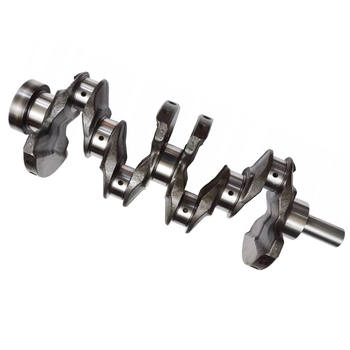
What's your biggest concern when sourcing critical engine components? Is it cost, reliability, or finding the exact part? Understanding your priorities will guide your search. Always ask questions, seek professional advice when in doubt, and prioritize quality over a bargain that might prove costly in the long run. A well-chosen and properly installed crankshaft will ensure your engine continues to run smoothly and powerfully for years to come.
For more detailed information, please visit our official website:Crankshaft for sale
About the author: Mark "The Engine Guru" Thompson is a seasoned automotive engineer and engine rebuilder with over 25 years of hands-on experience. Specializing in high-performance and classic engine restoration, Mark has rebuilt hundreds of engines, from vintage muscle cars to modern diesel powerhouses. His expertise lies in component selection, precision machining, and ensuring optimal engine longevity. He's passionate about sharing his knowledge to empower enthusiasts and professionals alike.
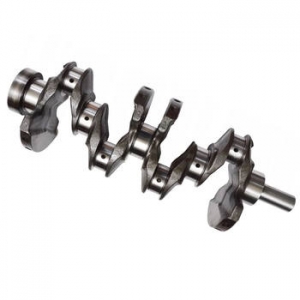 The Unseen Powerhouse: Unveili
The Unseen Powerhouse: Unveili
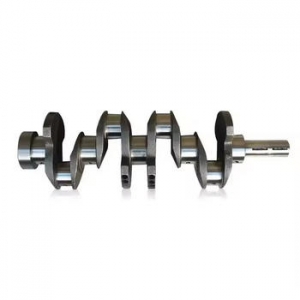 Revitalizing Power: A Deep Div
Revitalizing Power: A Deep Div
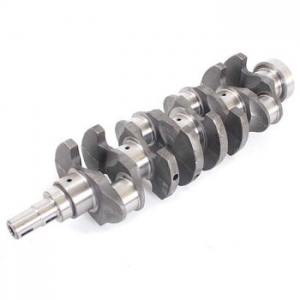 The Ultimate Guide to Finding
The Ultimate Guide to Finding
 Unlocking Engine Power: Your D
Unlocking Engine Power: Your D
